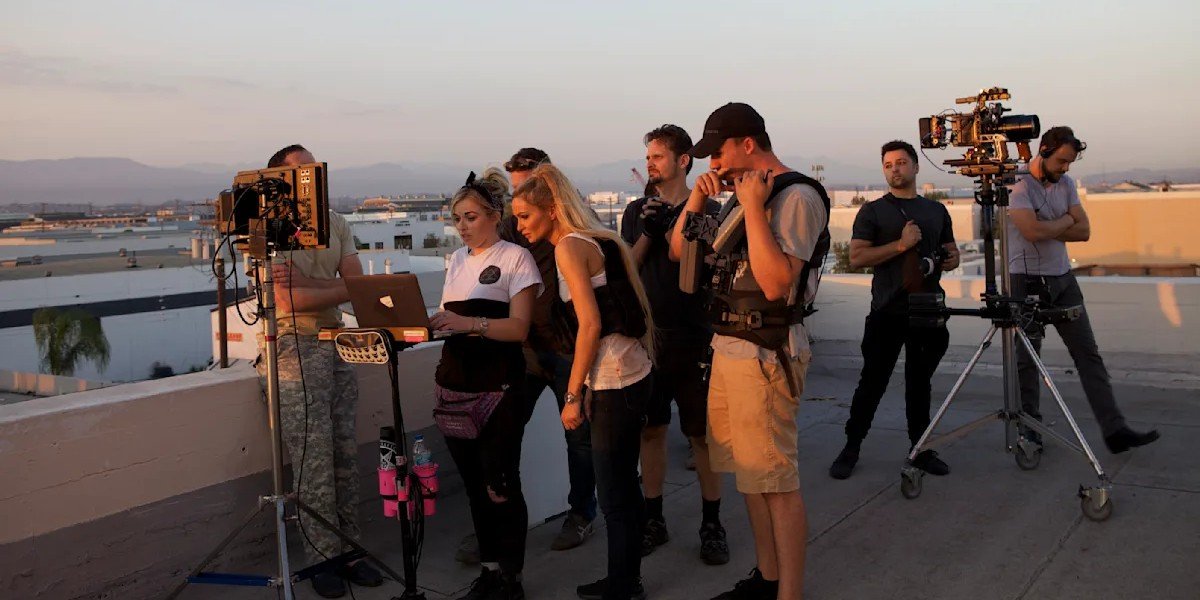The Cinematic Journey
The process of adapting literature into film is a fascinating journey that blends the world of written words with the artistry of cinema. Whether transforming a beloved novel, a revered classic, or a modern bestseller, the transition from page to screen is both a creative challenge and an exciting opportunity. This pillar delves into the nuances of this adaptation process, from the initial appeal to the intricate work involved in translating a literary narrative into a visual medium. It explores the artistic choices, challenges, and considerations filmmakers must confront to bring a book to life on screen.
Read Also: Essential Items for Outdoor Music Festivals: A Comprehensive Guide
The Allure of Adaptation
Filmmakers are often drawn to adapting books for various reasons, whether driven by commercial appeal, artistic curiosity, or audience demand. Literature provides a rich source of inspiration, offering established narratives, beloved characters, and built-in audiences. These elements not only create an immediate connection with viewers but also offer a foundation upon which filmmakers can build their creative vision.
Commercial and Artistic Motivation
From a commercial standpoint, book adaptations come with a built-in fanbase eager to see their favorite stories brought to life. Whether it’s the popularity of J.K. Rowling’s Harry Potter series or the Lord of the Rings trilogy, successful books often guarantee significant box office returns. On an artistic level, adapting a book into a film offers the opportunity to reimagine a familiar narrative through a new lens, utilizing visual storytelling, cinematography, and performance to bring the story’s themes and emotions to life in a different way.
The Challenges of Translation
Adapting a literary work into film comes with inherent challenges due to the significant differences between literary and cinematic storytelling. Novels rely heavily on language, internal monologues, and detailed descriptions, whereas films must communicate these aspects using visuals, sound, and performance.
Translating Internal Thoughts and Complex Prose
One of the greatest challenges in adapting a book is capturing the internal thoughts and complex prose that novels often explore in-depth. Writers have the luxury of delving into characters’ minds, providing a stream of consciousness or layers of emotional complexity. However, in films, these elements must be conveyed through visual cues, dialogue, or voice-over narration, which can limit the depth and subtlety of the original material. Translating this effectively without losing the essence of the character or theme can be a daunting task.
Expansive World-Building
Another challenge is the world-building inherent in many books, particularly in genres like fantasy or science fiction. Authors have the freedom to describe intricate settings, characters, and histories in great detail. In film, this expansive storytelling must be compressed into a visual experience, often leading to difficult decisions on what details to include and how to present them efficiently. Set design, special effects, and costume design all become crucial elements in conveying the world of the book, while still maintaining focus on the narrative.
The Adaptation Process: From Page to Screen
The journey of adapting a book into a film is a multi-step process that involves several stages, each requiring creative decisions that shape the final product.
Scriptwriting
The adaptation process begins with scriptwriting, where the book’s plot is transformed into a screenplay. This is where the first major choices are made about what to keep and what to discard. A successful script must capture the essence of the book while also adapting it to fit the unique requirements of film. The transition from prose to dialogue, from inner conflict to external action, and from lengthy descriptions to visual representation requires skill and imagination.
Casting and Direction
Once the script is ready, casting is a critical step in the adaptation process. Choosing the right actor to portray beloved characters is essential in maintaining the integrity of the original story. Filmmakers often face the challenge of balancing audience expectations with their vision for the character. The director then shapes the performances, visual style, and pacing, all while keeping the spirit of the original work intact.
Cinematography and Editing
Cinematography plays a key role in adapting literature to film, particularly when it comes to visualizing themes and emotions. Directors use camera angles, lighting, and shot composition to bring the text to life. Editing is just as important, as it controls the pacing of the film, condenses storylines, and ensures that the narrative flows smoothly from one scene to the next.
Faithfulness vs. Interpretation
The debate over faithfulness to the original book versus creative interpretation is a hallmark of film adaptations. Fans of the source material often want the film to be a literal translation, while filmmakers may feel the need to take artistic liberties to ensure the film works as a cinematic experience.
Why Changes are Made
Filmmakers often make changes to the original material for practical reasons, such as time constraints, the medium’s limitations, or artistic vision. For instance, a book that spans hundreds of pages may need to be condensed into a two-hour movie, leading to omissions or modifications. Some filmmakers opt to change the ending or alter character arcs to suit the demands of the film medium or to give it a fresh perspective.
Impact of Changes on Audience Reception
These changes can spark disagreement among audiences and critics. While some viewers may appreciate the artistic interpretation, others may feel disappointed or alienated by the alterations. The success of a film adaptation often depends on how well it balances respect for the original work with innovative storytelling.
Narrative Compression and Visual Storytelling
One of the central challenges of adapting books to films is narrative compression. Novels typically have the luxury of exploring multiple storylines and character developments, while films must condense the plot into a manageable runtime.
Streamlining Plotlines
To fit a novel’s sprawling narrative into a two-hour film, filmmakers often need to simplify the story, streamline subplots, and consolidate characters. This process of compressing time may involve cutting certain scenes, characters, or moments of the original book that don’t directly contribute to the main storyline. The goal is to retain the core essence and emotional impact of the original story, while adapting it to the pacing and structure of cinema.
Visual Techniques
Filmmakers often rely on visual storytelling to convey complex ideas and emotions. Through the use of symbolism, montage, and visual motifs, filmmakers can evoke the feelings and themes of a book without having to explain them in lengthy exposition. This is particularly effective in adapting books with rich, layered narratives.
Character Portrayal and Casting
Casting is perhaps one of the most critical decisions in any film adaptation. The casting of key characters has the power to define how audiences experience a beloved book. Perfect casting can bring the character to life, while a miscast role can lead to a mismatch between the audience’s expectations and the character on screen.
Balancing Audience Expectations
Fans of the original book often have a clear picture in their minds of how characters should look and behave. The casting of these characters can therefore make or break a film adaptation. The key challenge is to stay true to the essence of the character while giving the actor the freedom to bring something new and fresh to the role.
Genre and Adaptation
Each literary genre presents its own unique set of challenges and opportunities when it comes to adaptation. For example, fantasy and science fiction novels require significant visual effects, while historical fiction may require extensive set design and period-accurate costumes.
Fantasy and Science Fiction
Genres like fantasy and science fiction often present the challenge of bringing highly imaginative worlds to life. In books like “The Lord of the Rings” or “Dune,” filmmakers must find a way to portray fantastical creatures, magical landscapes, and complex world-building without overwhelming the audience with special effects. Balancing the fantasy elements with the core themes of the book is a delicate task.
Historical Fiction
Adapting historical fiction presents challenges related to accuracy in depicting events, settings, and characters. Films like “Schindler’s List” or “The Imitation Game” must remain faithful to historical facts while creating compelling cinematic narratives.
The Audience Experience and Critical Reception
The success of a film adaptation often depends on the audience’s relationship with the source material. Fans of the book may come to the film with high expectations, and their response can influence the film’s overall reception.
The Role of Expectations
The more beloved a book is, the more challenging the adaptation becomes. Fans often expect a certain level of faithfulness, but at the same time, they appreciate when filmmakers bring a new perspective or fresh insight into the story. Finding this balance is key to ensuring the film works as both a tribute to the original material and a standalone cinematic experience.
Read Also: The Resilience of Dance Competitions: Why They’re Still Going Strong
Critical Reception
Critics tend to evaluate film adaptations based on how well they capture the spirit of the original work, while also considering the film’s overall quality. A well-executed adaptation can bring new life to a book, while a poorly executed one may fail to resonate with audiences, regardless of how faithful it is to the text.
The process of adapting literature into film is both an art and a science. It requires balancing the intricacies of the original story with the creative possibilities of cinema. While the challenges are significant, the rewards are immense, as film adaptations have the power to introduce iconic literary works to new audiences and create lasting cinematic experiences. Through careful casting, storytelling, and visual techniques, filmmakers continue to bring literature to life in compelling ways, ensuring that these adaptations remain a crucial part of the cultural landscape.















